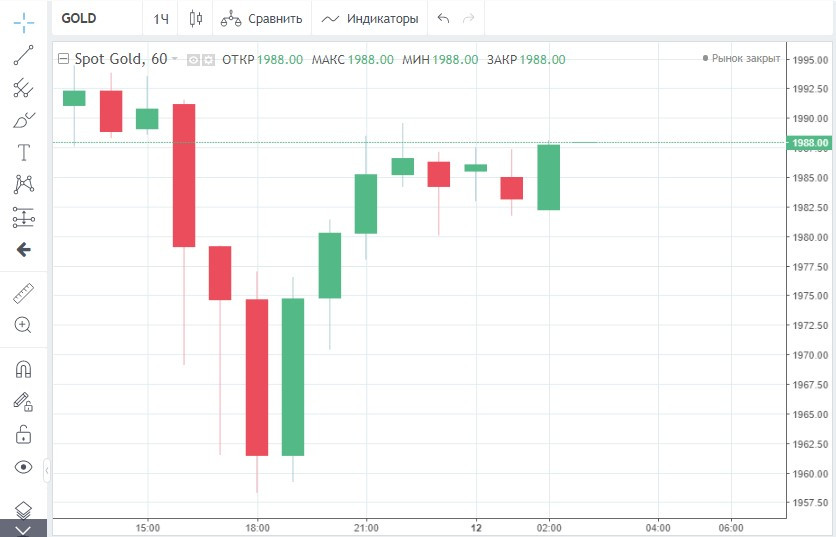Recently, gold showed strong volatility during the trading sessions. According to analysts' forecasts, such behavior of quotations will continue for a long time. What is the reason for it?
The precious metal closed the week with gains. The bullion has risen by 0.9% since Monday, although it reversed more than once during the trading week.
Thus, the price of gold, having perceived the support of geopolitical risks, jumped by 2.4% on Tuesday. Meanwhile, the quotes promptly collapsed by 2.7% on Wednesday due to the de-escalation of the Russian-Ukrainian conflict.
A sharp change in the range of price fluctuations was observed during Friday's trading, when gold steeply dived, and then sharply climbed.
Analysts associate yesterday's drop in gold with the Russian President's statement. On March 11, Vladimir Putin at a meeting with Belarusian President Alexander Lukashenko hinted at progress in the negotiations on the conflict in Ukraine.
The Russian President's encouraging comments surprised the markets and returned investors' appetite for risky assets for a while. Against this background, the attractiveness of gold as a safe-haven asset decreased, as a result of which quotations fell within 2 hours by about $30 and traded below $1,970.
However, gold did not remain in the red zone for a long time. The bullion reversed after US President Joe Biden announced the US intention to cancel Moscow's special trade status on Friday.
The loss of this status would make it difficult for Russian companies to do business in the United States because it would allow the US to raise tariffs on imports of a wide range of goods from Russia.
Canada has already taken similar measures against Russia. If Biden manages to convince Congress to stop normal trade relations with Moscow, it may put Russia on a par with such countries as North Korea, Cuba, and Iran.
Yesterday, the US President promised to try to convince the leaders of the G7 countries to ban Russia from receiving funds from the International Monetary Fund, the World Bank, and other financial institutions.
In another blow to the Kremlin, the White House has imposed another package of sanctions. On March 11, the US introduced an embargo on imports of diamonds, alcohol, and seafood from Moscow. It is also forbidden to ship luxury goods to Russia from the United States.
Biden's statement exacerbated market fears about more problems in global supply chains and rising inflation. As investors considered what he said, gold prices moved steadily upwards.
The release of the Consumer Sentiment Index from the University of Michigan also supported bullion prices. According to preliminary estimates, the index fell to its lowest level since 2011 at 59.7 in March. In February, the consumer sentiment index in the US was at 62.8.
Meanwhile, inflation expectations rose sharply this month. The US expects inflation to rise to 5.4% for the year, up from 4.9% last month.
Increased geopolitical and inflation risks helped bullion to partially recover the day's losses. However, the asset ended the session at a loss. The gold fell by 0.8%, or to $15.40 on Friday. The closing price was $1,985.
"It has been another explosively volatile week for gold as the risk pendulum swings back and forth. The precious metal remains highly sensitive to geopolitical uncertainty concerning Ukraine, while other themes in the form of rising inflation and growth concerns had added to the volatility," analyst Lukman Otunuga said.
Overall, experts predict that gold will maintain a volatile but upward trend. Each new package of sanctions against Russia will continue to put pressure on investors and increase their fear that inflation has not peaked yet.












